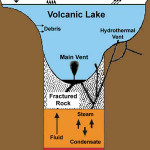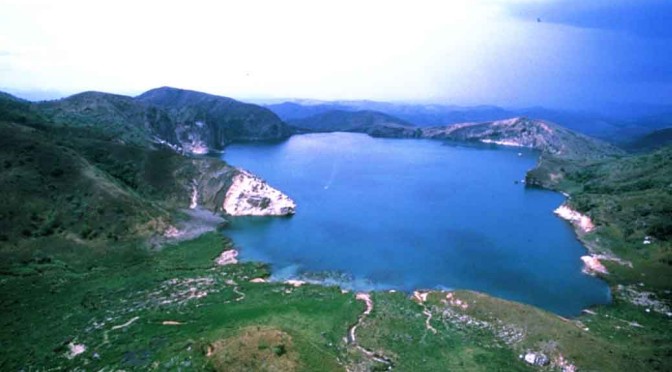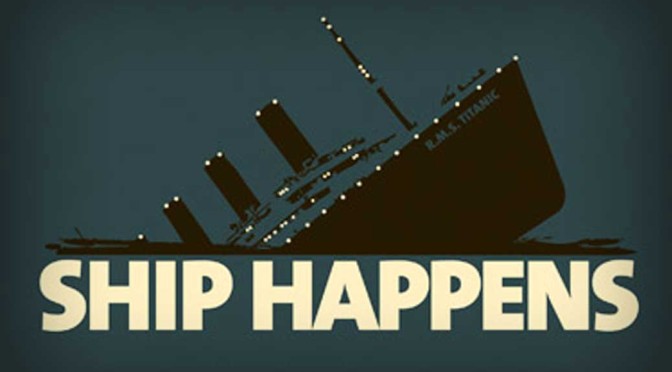By Anupum Pant
In the Northwest Cameroon (Africa) there’s a lake which is commonly known among the locals as “The Bad Lake”. The official name of this lake however is, lake Nyos. This is one of those three or four special lakes in the world which are mostly know for their mass killings. The locals living near the lake Nyos in particular have a very grim story to tell from the past.
The Story
A seemingly innocuous landslide occurred on August 21st, 1986. This created a mini tsunami and sent red water (due to iron) flying 300 feet in the air. There was nothing really dangerous about the flying water. But, as a result if this landslide, it is believed that about 1.2 cubic kilometres of carbon dioxide from the lake Nyos got released. The trigger could have been something else, but the gas that got released was carbon dioxide for sure.
This rare kind of a natural disaster is known as a Limnic Eruption or Lake overturn. There are just 2 other lakes known where scientists think this can happen – Lake Monoun, Cameroon, and Lake Kivu of Congo
The huge amount of CO2, being heavier than air, spread into the nearby low-lying villages in a range of 25 km. People had nowhere to escape and nearly everyone died. Only a few hundreds who acted quick, and escaped to higher ground on vehicles could save themselves. That day, 1,700 people and 3,600 livestock got suffocated to death.
Why it Happened
 Lake Nyos like only a few other lakes in the world was formed about 400 years ago on a huge crater. Far below the lake there’s magma and it spews CO2 continuously into the lake, forming huge amounts of carbonated water (a good thing for Coke lovers). The CO2 doesn’t usually release in a single go all the time. It happens gradually, and the pipes now installed to fix this keep releasing CO2 all the time (The pressure of gas also carries water along to form a beautiful fountain).
Lake Nyos like only a few other lakes in the world was formed about 400 years ago on a huge crater. Far below the lake there’s magma and it spews CO2 continuously into the lake, forming huge amounts of carbonated water (a good thing for Coke lovers). The CO2 doesn’t usually release in a single go all the time. It happens gradually, and the pipes now installed to fix this keep releasing CO2 all the time (The pressure of gas also carries water along to form a beautiful fountain).
Sometimes however, due to some triggers, the CO2 can get released in a single go and cause the absurd natural disaster which ends up killing thousands.
The Lake Kivu which is in Congo probably holds a much worse headline for the future. This one is about a 1000 times larger than lake Nyos and is surrounded by heavily populated towns. There’s magma below it too and any sort of disruption could cause massive amounts of carbon dioxide to release into the nearby towns. To add to the fears, researchers have found that the massive lake Kivu’s life goes extinct every 1000 years. We can only wait and watch what happens…






